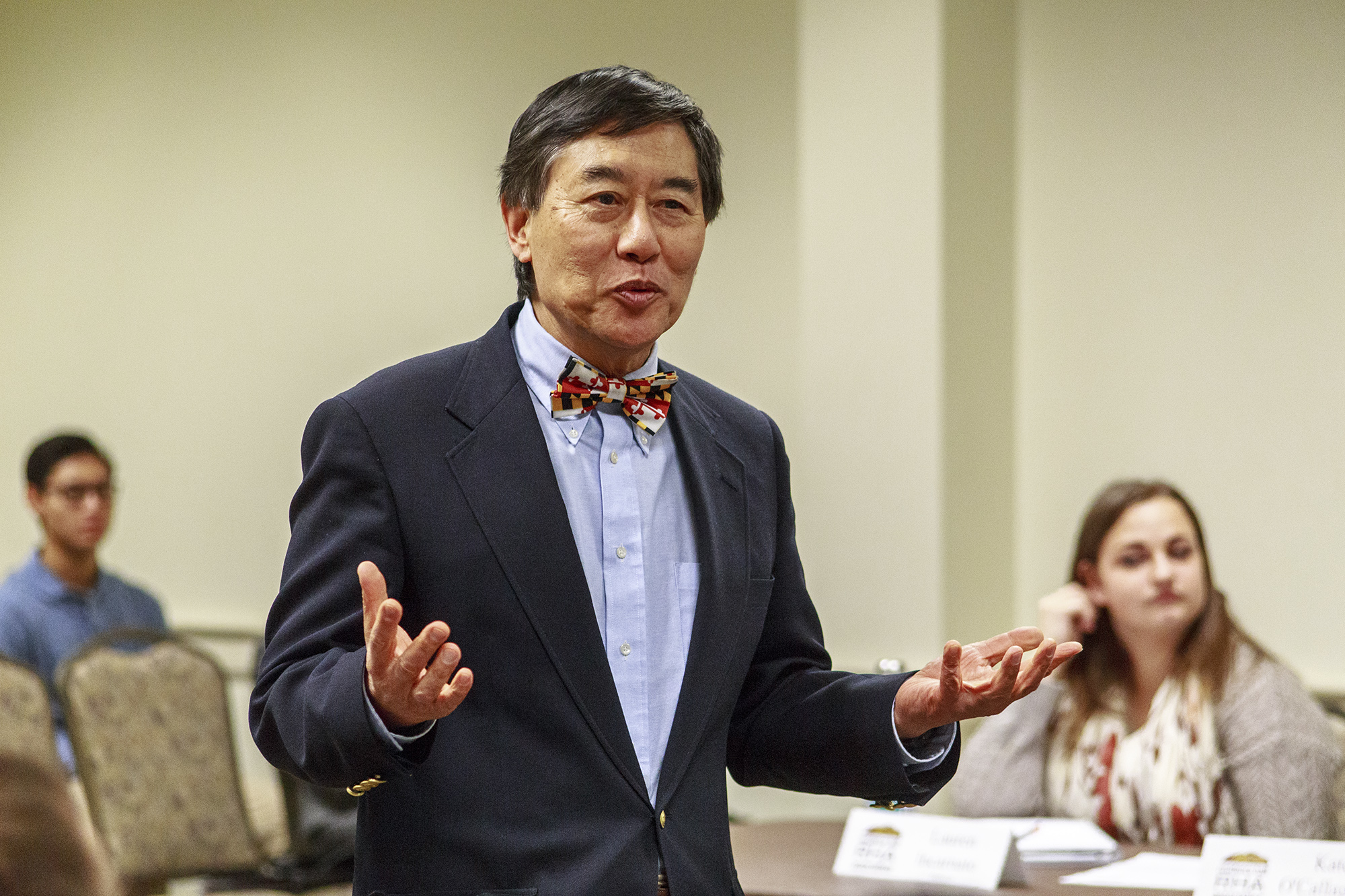Views expressed in opinion columns are the author’s own.
The education-centered nonprofit news organization The Hechinger Report released an analysis on Monday describing the disparity between the proportion of black Maryland high school graduates and black freshmen at the University of Maryland. In 2015, there was a 24-percentage point difference between those two metrics, with this university enrolling a much smaller percentage of black students compared to the state high school graduate population. Only six other state flagship universities had a bigger disparity than Maryland.
[Read more: UMD’s black student enrollment trails black high school graduate rates in Maryland]
For a university that continually advertises its commitment to diversity, and for a campus so frequently wracked by hate bias incidents, this report reveals another avenue for improvement. It’s worth asking why black students are underrepresented at this university — are the current responses to intolerance insufficient for students to feel safe? Do we lack resources to help their demographic succeed once at this university? And how we can get data to answer these questions? Yet the response from university administration has been inadequate.
In a Baltimore Sun interview, university President Wallace Loh quoted a 170-year-old adage, explaining that having a diverse and inclusive campus is important because “education is the great equalizer.” While the phrasing is kitschy and the sentiment well-intentioned, it misses the questions and concerns raised by the report. We know this university is committed to diversity because that’s part of its PR, and we see the new programs and institutions dedicated to inclusiveness. But we don’t know how well they’re working.
[Read more: Amid uptick in UMD hate bias incidents, officials open campus diversity survey]
Is a University of Maryland education actually equalizing? Are we successfully bringing down barriers to socioeconomic mobility or only perpetuating existing systems? Loh says it’s not just an issue of access to education but also high school quality preventing black students from enrolling in greater proportion, which sounds like another iteration of systemic inequality. If a student only has access to a “bad” high school, they may lose access to higher education at this university and other opportunities. We can’t eradicate such a complex problem, but that doesn’t mean we have to be complacent.
Moreover, Loh suggests that it’ll all work out in the long run as the quality of public schools improves. But injustice doesn’t disappear without action and our university president shouldn’t take such a passive attitude toward these inequalities. This university is a public institution, and we are part of the state education system; we should be responsive to our community, not fortressing ourselves in an ivory tower.
He also should have pointed to the holistic admissions process rather than singling out high school quality as the discriminating filter. It’s uncomfortable to hear your application might be disregarded because of a factor you have such little control over, especially to the point where your grades won’t vouch for your work ethic because of a school’s reputation.
In an interview with The Diamondback, Loh goes on to defend the disproportionate representation of black students at this university, which he absolutely did not have to do. He mentions that he legally cannot set a quota or call any proportion of black students the “right number,” which is true but ignores the value of the data set. We shouldn’t have to artificially select the demographics of our student body. None of the other state flagship institutions do so, and the vast majority have less of a representation gap than this university.
Responses by other officials have created an echo of, “We’re a very diverse campus and proud of that.” Their tone feels defensive, but this report is neither an attack nor a demand. Our diversity programs are works in progress and administrators could have taken this in stride, realizing we have more to work on. They could have communicated more about the initiatives they’re taking, what they’re seeing, the feedback they’re getting. It could’ve been a moment for honest dialogue.
Here was an opportunity for the administration to show their competency at addressing community concerns, and they kind of blew it.
Sona Chaudhary, opinion editor, is a sophomore English and geology major. She can be reached at sonachaud@gmail.com.



